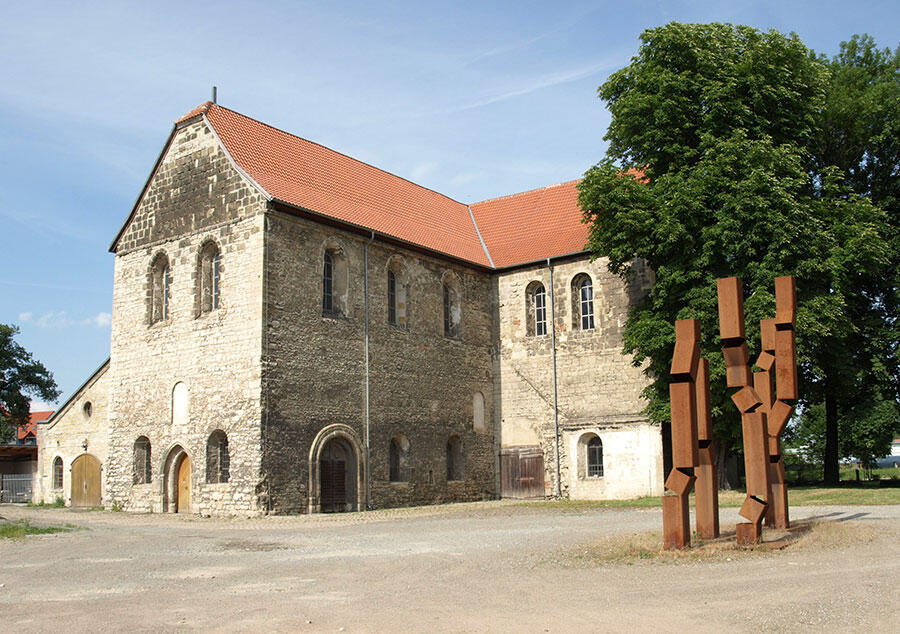Can John Cage’s 639-Year Organ Rethink Our Relationship to Space?
The renowned composer created a rousing piece of music with changing dynamics by manipulating the speed of sound
The renowned composer created a rousing piece of music with changing dynamics by manipulating the speed of sound

This piece appears in the columns section of frieze 244, ‘Built Environment’
In 1987, composer John Cage wrote a four-page piece for organ called ORGAN2/ASLSP, an adaptation of Aslsp, As SLow aS Possible (1985), which he wrote for piano. Each note decays as soon as it’s been played on the piano but, on the organ, the note can be maintained for as long as the performer wishes or deems ‘possible’. Cage didn’t write a time signature, nor does his score adhere to conventional values. Thick horizontal bars follow each note, the length of which equate to a percentage of the pre-determined duration of the entire performance. Over the years, organists have competed to make their performance the longest: slow is always relative.

In 2009, Diane Luchese gave a performance that lasted just under 15 hours; Christopher Anderson played for 16 hours in 2022; and, starting at 5pm on 29 January 2023, Alexander Meszler performed the piece at Luther College in Iowa over 24 hours – an arbitrary duration that cosmically connects Cage’s provocation with the rotation of the Earth. Meszler concluded that the work was really about the definition of ‘possible’ in relation to the performer. ‘Maybe, at hour 18, I’ll realize that I’ve already reached my limit,’ he wrote in the programme notes. ‘Well, at least I’ll know that 24 hours isn’t possible for me.’ Meszler suggested that a more apt title for the work might be, ‘As Slow as Difficult but Doesn’t Interrupt your Life or your Health’.
Cage’s provocation was discussed at length during a conference held at the Trossingen Music Conservatory in 1998. There, organist Hans-Ola Ericsson suggested that, arguably, the longest possible performance of the piece was dependent on the lifespan of the instrument, and thus the John Cage Organ Project was formed to oversee such a performance. The group planned for ORGAN2/ASLSP to be played in the German town of Halberstadt, where the first modern organ was built in 1361 in the city’s cathedral. If Cage’s piece began in 2000, the group reasoned, then it should last for 639 years – the same span of time between the birth of the organ and the start of the piece – so it would end in 2639. A custom organ (fitted with backup generators and solar panels in case the city’s power shuts down at any point) was built in St. Burchardi church. It began performing on 5 September 2001, which would have been Cage’s 89th birthday.

Stretched out over more than half a millennium, the time between each note of the piece could last several years. ‘Performers’ appear at the spare, secularized church with each new note, progressively constructing the instrument to play the next. Here, music, the expressive patterning of tone and rhythm, dissolves into sound, a vibratory condition. While melody relinquishes its communicative function if it extends far beyond a human lifetime, Cage’s piece might be played even slower, stretching over millennia rather than centuries, its successive notes chiming as if timed to coincide with the rise and fall of civilizations, developments in climatic trends or shifts in geological states. A chord change might sound during the explosive appearance of a new volcanic island, the extinction of a species or the evolution of a new one. Music, or human culture more broadly, can be reconceptualized as the trans-generational soundtrack to the dynamic workings of the living planet.
In Cage’s score, ORGAN2/ASLSP actually starts with a rest, and a strict interpretation of the tempo might render the piece eternally silent. In the Halberstadt performance, the opening silence was calculated to be 17 months. In Luchese’s 14-hour, 56-minute performance, it was four minutes and 30 seconds long. She extended the silence by three seconds as a homage to Cage’s legendary 4’33” (1952), a piece in which the performer would not make any deliberate sound for the titular duration. If ORGAN2/ASLSP demonstrates how human expression might be embedded into the broad, epochal rhythms of the planetary ecosystem, 4’33” shows that music – indeed all forms of human expression – is already an environmental endeavour. Sitting in silence, the performer gives time and space to the sound of a passing car, the low hum of a ventilation system or the soft, rhythmic vibration of a ringing phone.

Slowing things down, sitting still, heightens our sensibility to the ecology around us. Cage’s music is underscored by humour, if not irony. ORGAN2/ASLSP and 4’33” – his theses on the environmental embeddedness of human expression – seems to negate humanity’s involvement in the project of its own becoming. A piece of music, lasting millennia and requiring silence from all of us, may well be worth performing.
This article first appeared in frieze issue 244 with the headline ‘Sleepers Awake’
John Cage’s Organ²/ASLSP will continue to play at John Cage Organ Foundation Halberstadt until 2640.
Main image: Sheet for musical notes (detail), 2014. Courtesy: ajma_pl / Getty Images

























